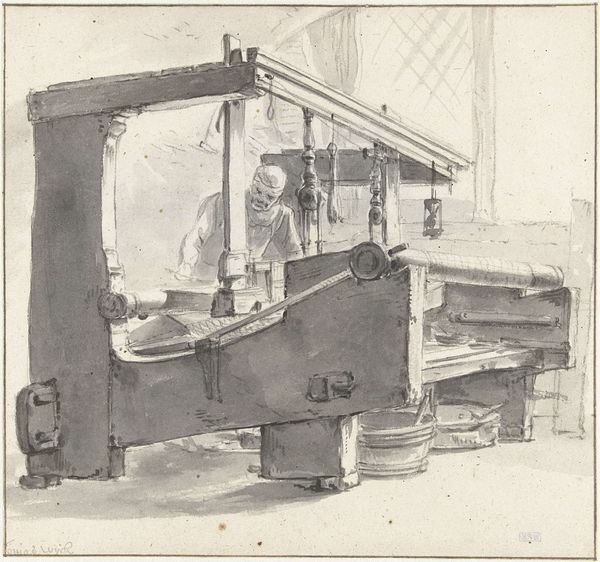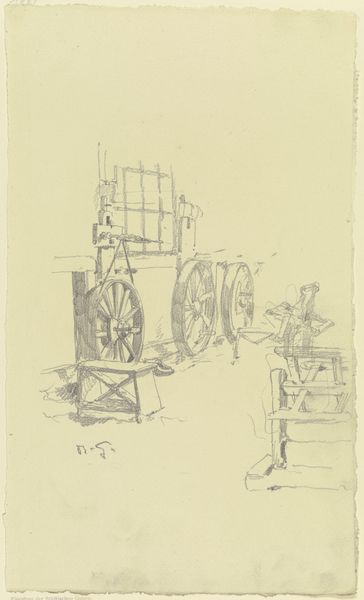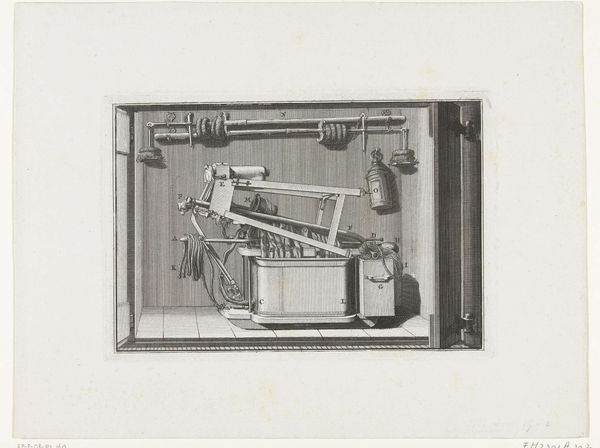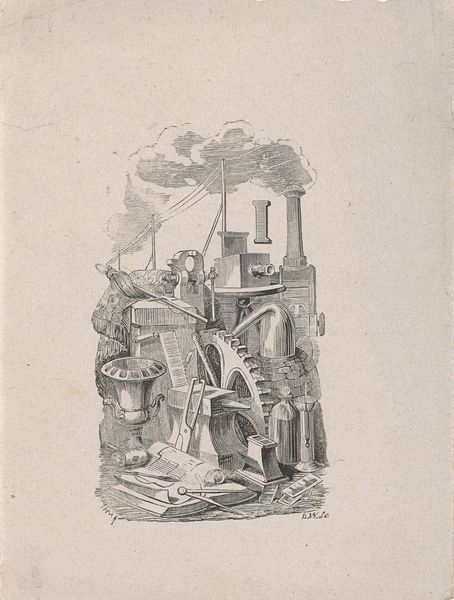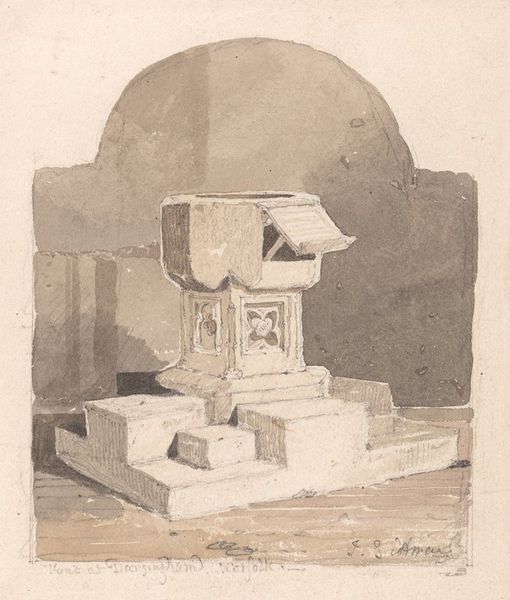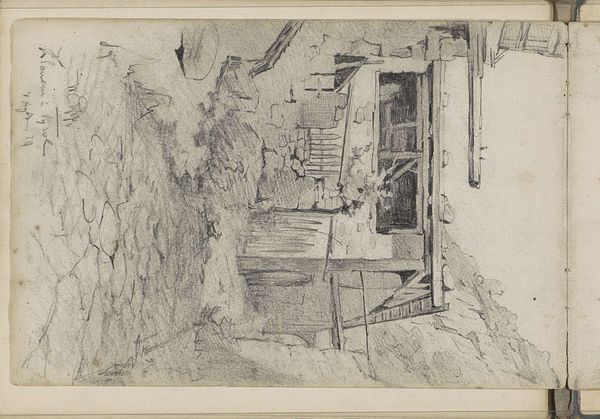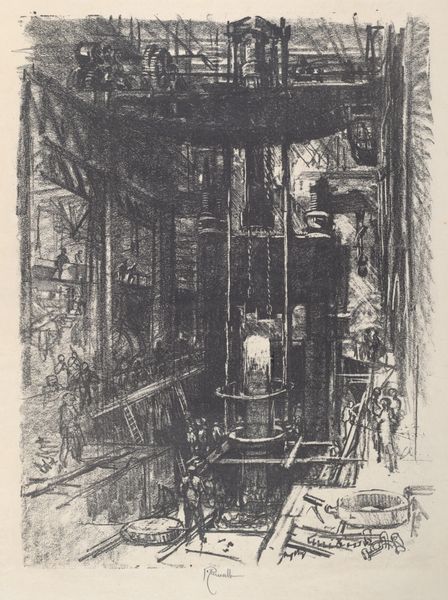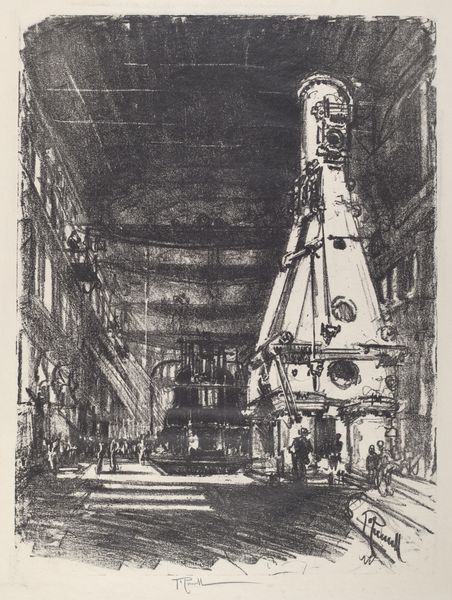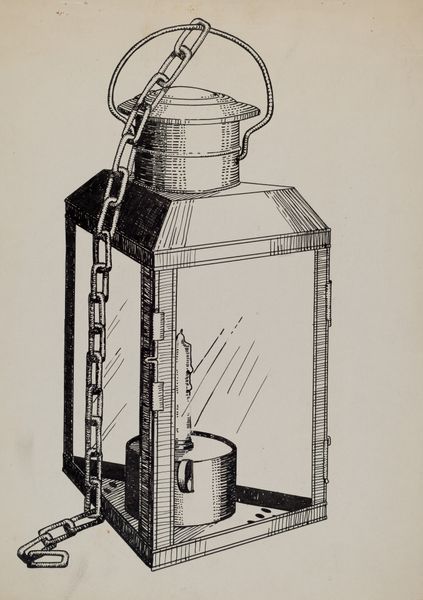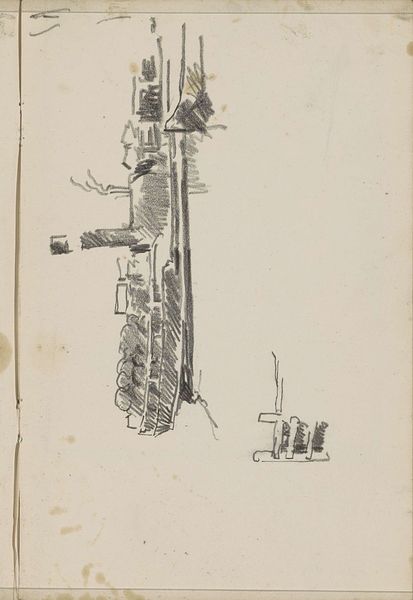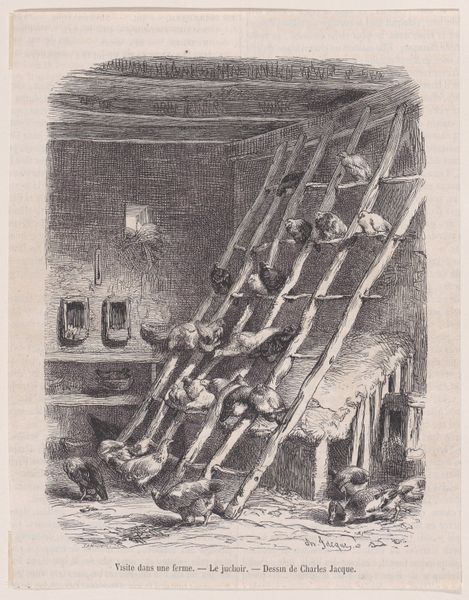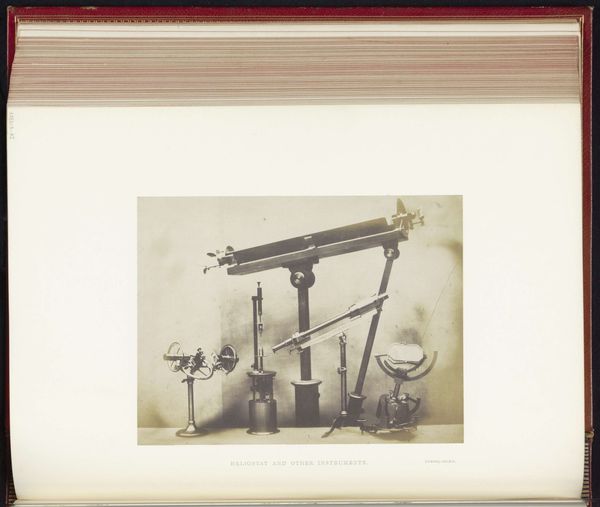
drawing, paper, ink
#
drawing
#
paper
#
ink
#
genre-painting
#
realism
Dimensions: 15 1/2 x 12 in. (39.37 x 30.48 cm) (sheet)
Copyright: No Copyright - United States
Curator: Joseph Pennell’s “Making Observations,” from around the 19th century, presents us with a look inside what seems to be an astronomer’s or a photographer's studio, rendered in ink on paper. What catches your eye? Editor: The sheer mass of that primary machine dominating the room gives an aura of power and mystery. You immediately sense the importance of the work conducted here. It is a space seemingly dedicated to unveiling hidden truths. Curator: Absolutely. The visible tools here speak volumes about 19th-century scientific or artistic production, right? There are several stands, optical tools like the scope in the background... What kind of labor underpinned such activity, from material sourcing to knowledge gathering? Pennell doesn't depict the craftspeople, but the machinery is front and center. Editor: Right, this absence is telling. Who is empowered to conduct this kind of observation and what biases are present in that activity? This scene appears intensely gendered and raced – almost oppressively masculine in its composition. The cool detachment in the depiction, the greyscale palette—it speaks to notions of objective “truth” that are not value-neutral at all. Curator: I would also consider the labor of making the work itself. Look at the different applications of ink to define all these objects. This room’s objects could reflect a cultural moment invested in scientific advancement and maybe photography or telescopic exploration specifically. How would his art and print-making production change if different supplies were used? What decisions would have been possible with different distribution? Editor: Well, think about the context of scientific exploration and imperialism. These tools are complicit in expanding empires and creating taxonomies, you know? Looking through Pennell’s drawing we need to interrogate that impulse. How can the making and interpretation of artwork address inequities related to observation itself? Curator: Those are essential considerations for the study of visual culture in our own time, even centuries later. Thank you for giving us the prompt for critical engagement here today. Editor: Thank you. I find myself re-evaluating this scene, hoping we as observers can also be more responsible to those under our gaze.
Comments
No comments
Be the first to comment and join the conversation on the ultimate creative platform.

